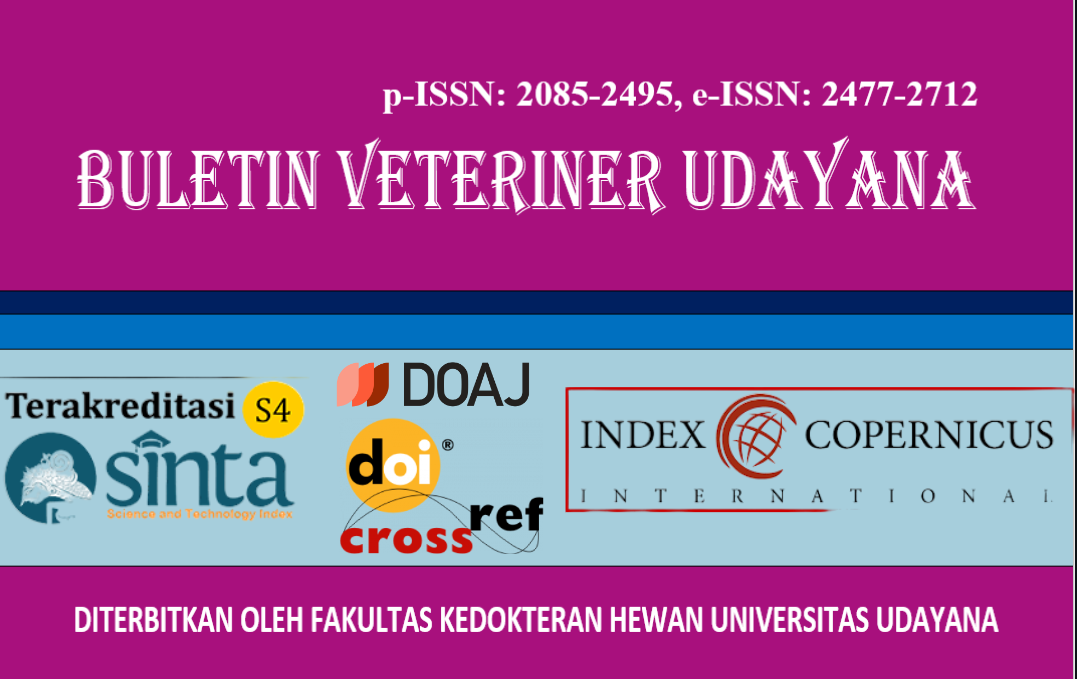CASE REPORT: TREATMENT OF TIBIAL OBLIQUE DIAPHYSEAL FRACTURE IN DOMESTIC CAT
DOI:
https://doi.org/10.24843/bulvet.2025.v17.i05.p10Keywords:
Cat; oblique diaphyseal fracture; tibial bone; wireAbstract
Long bone fractures are common orthopedic problems in small animals, with tibial fractures being the third most frequent and diaphyseal fractures accounting for approximately 75% to 81% of all tibial fractures. This report describes the treatment of an oblique diaphyseal tibial fracture in a 2-year-old female domestic cat weighing 1.9 kg that had been lame for one week. Physical examination revealed pain and crepitation in the left hind limb, and radiographic evaluation confirmed an oblique fracture in the diaphysis of the left tibia. Treatment was performed using internal fixation with orthopedic wire, and postoperative care included intravenous administration of cefotaxime sodium (20 mg/kg BW) and meloxicam (0.2 mg/kg BW), followed by oral cefadroxil monohydrate (22 mg/kg BW/q12h for 7 days), meloxicam (0.1 mg/kg BW/q24h for 3 days), and calcium gluconate (10 mg/kg BW for 10 days starting on day 7). Two weeks after surgery, callus formation was observed at the fracture site, and the cat was able to walk normally without signs of lameness. Internal fixation using wire proved effective for treating oblique diaphyseal tibial fractures in domestic cats when combined with appropriate postoperative management, highlighting the importance of selecting the right fixation method and follow-up therapy to ensure optimal recovery.




